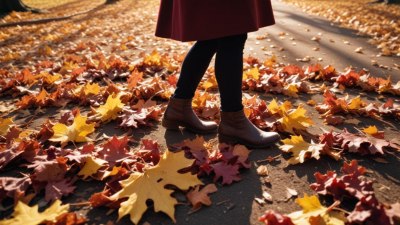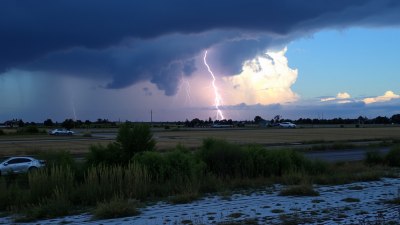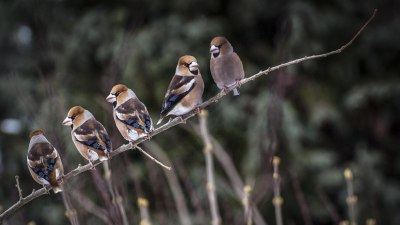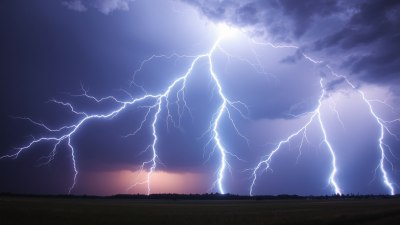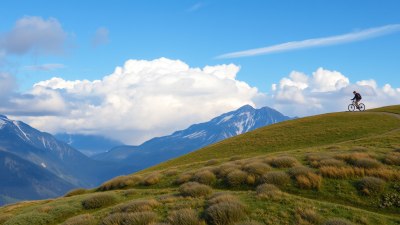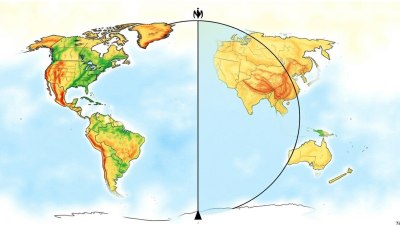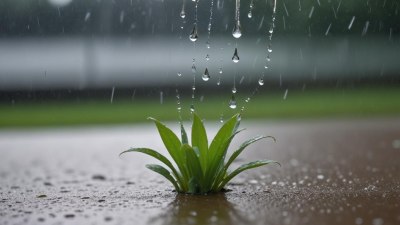The Battle of the Seasons: Why Spring and Fall Can’t Make Up Their Minds
Explores the unpredictability of spring and fall seasons and their climate implications.
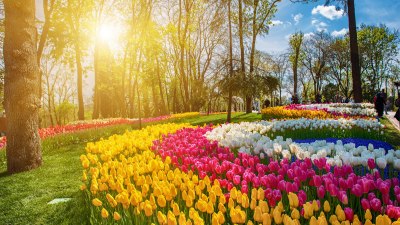
The changing of the seasons is one of nature's most mesmerizing spectacles, but few transitions are as compelling—or as perplexing—as those of spring and fall. Each year, these two seasons battle it out, with spring radiating optimism and vibrancy, and fall cloaked in an ephemeral beauty that hints at the chill of winter to come. Yet, despite their differences, both spring and fall exhibit a sense of unpredictability that can leave even the most seasoned meteorologist scratching their head. This article delves into the reasons behind the capricious nature of these transitional seasons, their unique characteristics, and the broader implications on our environment.
Spring, heralded by blooming flowers and the sweet fragrance of new life, often begins as a promise of warmth and renewal. It’s a season that symbolizes hope, awakening from the dormancy of winter’s grip. However, spring can also be notorious for its erratic weather patterns. One moment, the sun is shining brightly, urging flora to burst into bloom, and the next, a sudden cold front might blanket the area in a late-season snowstorm. Such unpredictability can be attributed to the clash of remaining winter air masses and the encroaching warmth, leading to volatile conditions that can baffle both flora and fauna, and result in peculiar weather phenomena.
The scientists studying these abrupt changes aim to understand the abrupt swings in temperature that characterize spring. An increase in average global temperatures is partially responsible for these extremes; as the earth warms, the typical patterns of seasonal transition become less predictable. This causes not only concern for affected ecosystems but also for the timing of agricultural activities dependent on the reliable behavior of seasons. Farmers may find themselves at a crossroads, trying to anticipate when to plant seeds, as spring may come early or late, or tease with sporadic frost. Additionally, an altered weather pattern can invoke a series of cascading problems like crop failure, pest invasions, and soil degradation.
In contrast, fall, with its vibrant foliage and cooling winds, often marks a period of reflection before the starkness of winter. However, much like its sister season, fall doesn’t come easily. As summer’s grip slowly relents, the weather can be just as unstable. Pleasant autumn days can suddenly be interrupted by searing late-summer heat waves or unseasonable cold snaps. Similar to spring, these abrupt changes can be attributed to the collision of warm air, retreating moisture-laden systems, and the first whispers of winter. The autumn equinox symbolizes change but also ambiguity; just as nature prepares for rest, it sometimes seems as though the world can’t quite decide how to transition into dormancy.
Fall not only presents challenges to nature but also poses questions to our daily lives. The transition into fall can be remarkably unpredictable, as individuals find themselves reaching for summer attire one day and bundling up in winter coats the next. This inconsistency creates not only an inconvenience for those attempting to dress appropriately but also influences planning for outdoor events and activities. Those hoping to enjoy the crisp air and colorful foliage may find themselves thwarted by unexpected rains or heavy winds, leaving them to wonder if fall has truly made its mind up.
A key feature in understanding the seasonal tug-of-war lies in the behavior of jet streams and atmospheric pressure systems. The polar jet stream, an upper-level wind current, plays a pivotal role in dictating weather patterns. During spring and fall, the positioning of the jet stream can oscillate, allowing warmer air to surge northward or drawing cold air down from the poles. These streams can be influenced by various factors, including landmasses and ocean currents, often resulting in unpredictable regional weather conditions. This phenomenon not only fuels the fluctuation in temperatures but also aids in shaping the nature of storms, leading to sudden rain showers, high winds, or even early snowfalls.
While they herald different changes, the intertwined nature of spring and fall is apparent when we look at nature's response to these shifts. For example, the same tree species that burst to life in spring during warmer-than-expected days often struggle to maintain their energy as fall’s chill sets in too quickly. The precarious balance is exhibited when flora relies heavily on stable weather patterns; early blooming may yield surprising results when abrupt frost occurs immediately after flowering. This interdependency underscores nature’s fragility and adaptability, displaying how ecosystems can fluctuate in response to unpredictable climatic conditions.
However, the tale of spring and fall extends beyond just weather and biology; it also encompasses human activities and societal rhythms. Our cultural practices, celebrations, and agricultural cycles revolve around the predictability of seasons. The unpredictability presented by spring and fall can have far-reaching effects on harvest festivals and rituals that celebrate seasonal changes. Farmers’ market stalls bustling with the arrival of spring produce, sometimes curtailed by frosty mornings, lead to an emergent conversation about climate stability and food security.
Moreover, it’s essential to consider the impact of climate change. The documentation of changing seasons has led researchers to observe fascinating trends in biodiversity. Some species are shifting their lifecycles in response to altered seasons; for example, certain birds may migrate earlier due to warmer springs, while other creatures may find themselves breeding out of sync with their available habitat. The intricate web of life is becoming increasingly strained as the rhythm traditionally dictated by spring and fall falters.
This dynamic also extends into urban settings, where urban heat islands affect seasonal changes. Cities may experience warmer temperatures than their rural counterparts, affecting local flora and fauna. This not only challenges the ecosystem but also influences human activities, as urban areas might experience earlier blooms and altered fall festivities. Urban planning is increasingly focusing on how to accommodate these changes, exploring how landscaping and architecture can mitigate climate impacts while respecting the natural rhythm of the seasons.
In conclusion, the continuous battle between spring and fall is marked by unpredictability, a reflection of the changing climate systems and the delicate balance of ecosystems. Both seasons share an element of uncertainty that impacts not only the natural world but also human activities and societal practices. As climate continues to change, our understanding of these two remarkable seasons will grow, and perhaps the lessons learned from their perpetual indecision could guide us toward a more sustainable way of living in harmony with our environment. Beauty often exists in uncertainty; as we embrace the lessons carried by spring and fall, we might just find inspiration in our own journey through the seasons of life.
